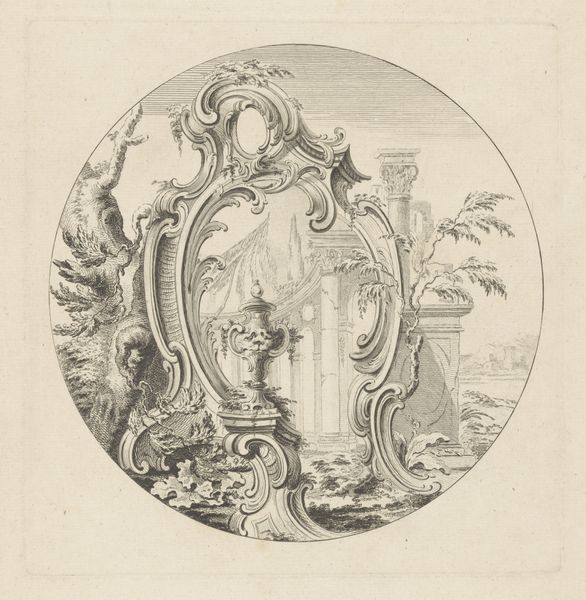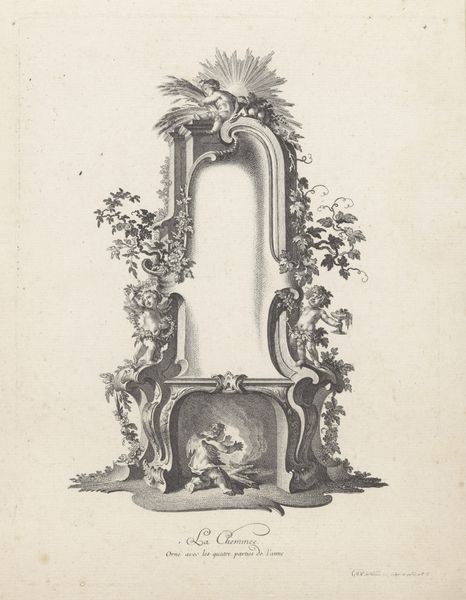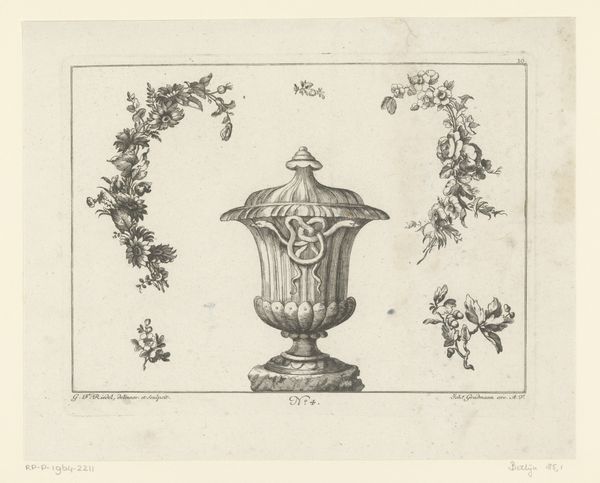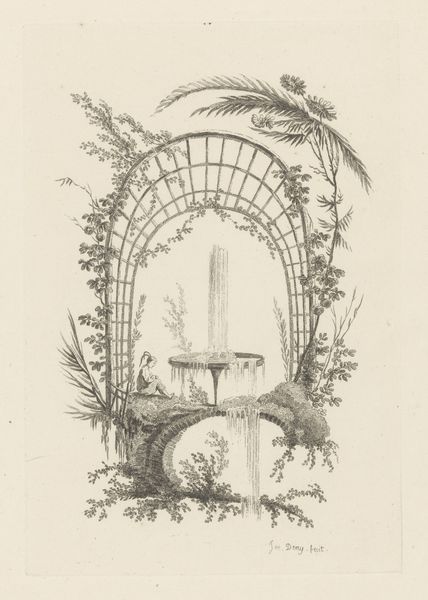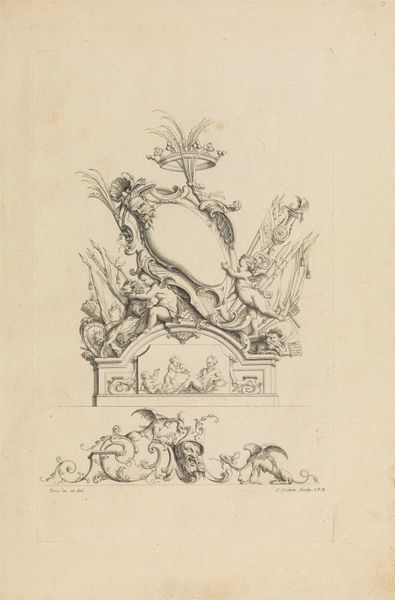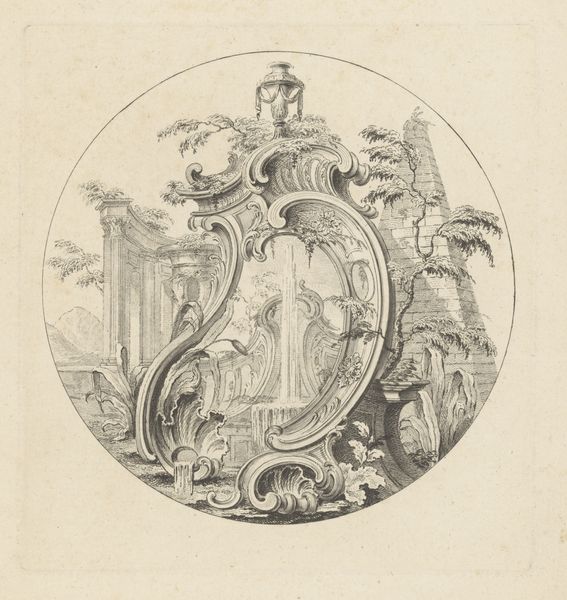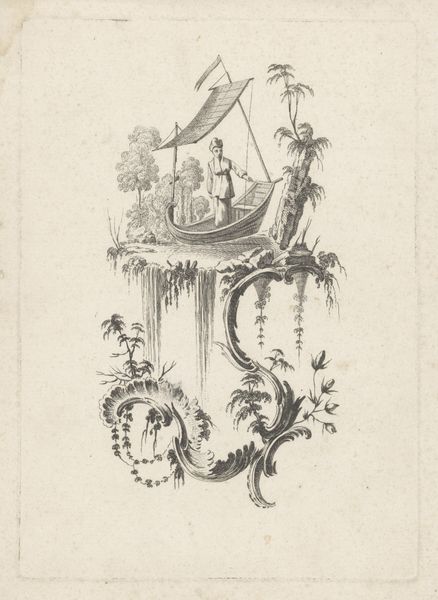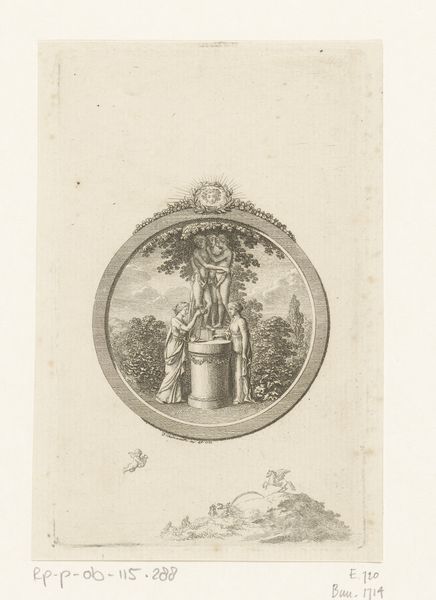
drawing, pen, engraving
#
drawing
#
light pencil work
#
baroque
#
pen illustration
#
pen sketch
#
pencil sketch
#
old engraving style
#
landscape
#
personal sketchbook
#
ink drawing experimentation
#
column
#
pen-ink sketch
#
pen work
#
sketchbook drawing
#
pen
#
engraving
Dimensions: height 185 mm, width 185 mm
Copyright: Rijks Museum: Open Domain
Curator: This delicate drawing is entitled "Cartouche in Landscape with Columns." Anthony Walker executed it in 1752. It’s currently held at the Rijksmuseum. The artist employed both pen and engraving to create this tranquil scene. Editor: The composition immediately evokes a feeling of gentle melancholy, almost like a faded memory or a half-remembered dream. The muted tones and delicate lines lend an air of fragility. Curator: Precisely. Note how the cartouche itself acts as a frame, within which we see glimpses of the past rendered through baroque symbolism. The architectural ruins suggest a decaying grandeur, but are they really in ruin? Editor: Ruins often evoke a powerful sense of temporal tension. Walker seems to be pointing toward both a lost golden age and its persistence in the present. Columns become metaphors for legacies, ideologies, even empires, but their fracture invites us to ask questions of power and its effects over time. Curator: Consider too that Baroque art revels in ornamentation and emotional impact, drawing upon classical and religious imagery. We often find in this era echoes of ancient worlds juxtaposed with the growing scientific and humanist perspectives of the Enlightenment. Is the vase a direct echo of these themes? Editor: Yes, but how does that dialogue with nature then invite viewers to contemplate mortality and permanence? There’s something unsettling in seeing nature reclaiming architectural elements; it speaks of cycles of rise and fall. What does that symbolize beyond traditional readings of wealth and social class? Curator: I'd argue that we shouldn’t read a distinct call for class solidarity into what is, at its essence, an aristocratic appreciation for symbolic melancholy. But, even for the elites of Walker's time, such art pieces provided spaces for reflection on the ephemeral nature of existence, and those symbols remain emotionally and aesthetically charged. Editor: It is interesting how time shifts the cultural significance, how it changes in our moment today. Overall, it seems this piece's true value lies in its visual poetry and its capacity to prompt dialogue about the human condition across centuries. Curator: Absolutely, the artwork allows space for endless interpretations on permanence and change, the nature of power, and our ever-evolving human journey. Editor: A poignant reminder that what stands today may one day become another echo, if we’re not aware of history and symbols that came before us.
Comments
No comments
Be the first to comment and join the conversation on the ultimate creative platform.

